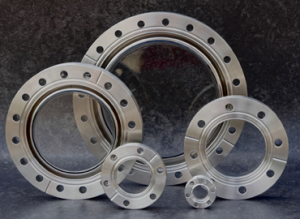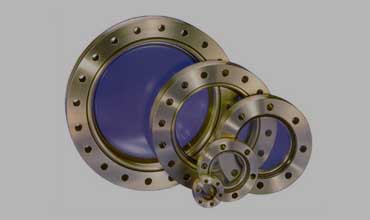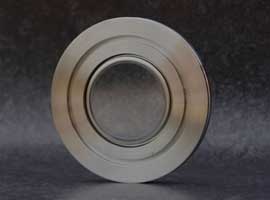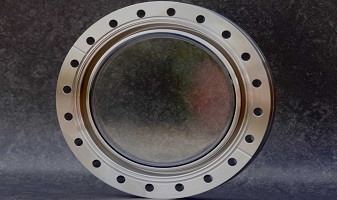At Moores Glassworks, we create many different glass products that have many uses.
Some of our products can be explained in previous blogs, such as this one on cathode ray tubes and this one on photoionization detectors.
Another popular product that we ship all over the world is vacuum viewports.
We create many different variations of vacuum viewports that can be used in different environments.
What is a Vacuum Chamber?
In most vacuum chambers there will be a vacuum pump.
This pump is used to take all of the gas and air from inside the chamber.
There are many instances that a vacuum chamber is used, including when drying out products by lowering the boiling point of water to around 30 degrees, and also when working on equipment that will be used in an environment devoid of air, such as in space.
Chambers are often made of metal and can range in size.
The largest is at the NASA Glenn Research Center in Sandusky Ohio and reaches a whopping 122 feet tall and 100 feet wide.
This is used to test how vehicles will react when in space.
Smaller vacuum chambers, measuring around 10 cm wide can be bought for personal use and are found regularly in households to dry items and for other uses.
Of course, when analysing items inside a vacuum chamber, you need to be able to see in, and sometimes to be able to alter the process, and this is where a vacuum viewport comes in.
What is a Vacuum Viewport?
Vacuum viewports are a vital part of any vacuum chamber, allowing visual access into the vacuum chamber while maintaining the vacuum integrity.
There are various reasons that viewports are used on a vacuum chamber.
Primarily, they are used to observe the process taking place inside the chamber and illuminating the inside of the chamber through a viewport is common practice.
You can also use a viewport to alter the process inside the vacuum, by using electromagnetic waves that are shot inside the chamber.

Vacuum Viewports
Types of Vacuum Viewport
There are many different types of vacuum viewports available, each with its own advantages and disadvantages.
Choosing the right viewport for you depends on the chamber that you are using and the specific needs you require.
Ultra-High Vacuum Viewports
The most common type of vacuum viewport is the ultra-high vacuum viewport.
These are best used in situations where the pressure inside the chamber is very high. To make sure the viewport is safe, it is made from extremely strong and durable materials.
At Moore’s Glassworks, we use optical quality ‘Kodail’ glass which is sealed into ‘Kovar’ spinnings.
These are extremely tough and will withstand heavy pressure from inside the chamber.
Ultra-high vacuum viewports also have a very low outgassing rate, which makes them ideal for use in ultra-high vacuum chambers.
Other Vacuum Chamber Viewports
As mentioned previously, not all vacuum viewports are classed as ultra-high. There are many others on the market which work perfectly well in low-pressure situations.
These are made from a less expensive material and are often easier to install.
However, they are not as strong as the ultra-high vacuum viewports and may not be able to withstand the pressure inside some of the larger and more volatile chambers.

The Viewport
Viewports basically come in two parts. The viewport itself and the flange.
The viewport is the glass, and at Moores Glassworks, we use kodial.
This viewport, or lens, is hermetically sealed to ensure the nothing can seep in or out of the chamber.
We supply the full range of viewports at Moores Glassworks, including CF viewports, KF glass viewports, ISO coated kodial viewports and ISO coated borosilicate glass viewports.
If you are unsure of your requirements, get in touch with one of our experts for professional advice.
The Flange
The flange is the outer ring of the viewport, and this can come in many different varieties, including:
- Conflat – This design binds two identical flanges together to create a tough seal. You can spot a Conflat as it often has holes around the rim.
- ISO KF – For high compatibility, this design consists of an inner ring which is tightly kept in place with a clamp.
- ISO LF – Similar to KF, but this design has grooves that further strengthen the tight grip on the central ring.
All of the flanges produced by Moores Glassworks are made from 304L stainless steel and the spinning material is the highly magnetic Kovar.
Moores Glasswork’s Vacuum viewports
At Moores’ Glassworks, we ensure that all of the viewports we send to customers are high quality and made to fit their chamber perfectly.
We do this by working to a brief given to us by the customer, which allows us to build the viewport to the exact dimension needed to make sure it is safe.
Not only is the dimension important, but also the pressure inside the chamber, the type of chamber you have, and the budget you have set aside for the viewport.
We have a dedicated quality control team who check every product that leaves our warehouse.
This means that no viewport will be delivered without checking it is perfect for the job at hand.
All of our viewports are also cleaned according to UHV standards and have a maximum temperature of 400 degrees, with a maximum heating rate of 3 degrees a minute.

Get in Touch
If you’re looking for a professional, tailor-made viewport to fit your vacuum chamber, then get in touch with Moores Glassworks today.
We can provide a free quote and will make the viewport to your exact specification.
We look forward to hearing from you.


enrico.schellekens@trymax-semiconductor.com
i am looking for a sapphie viewport KF 25, volume per year 100-200